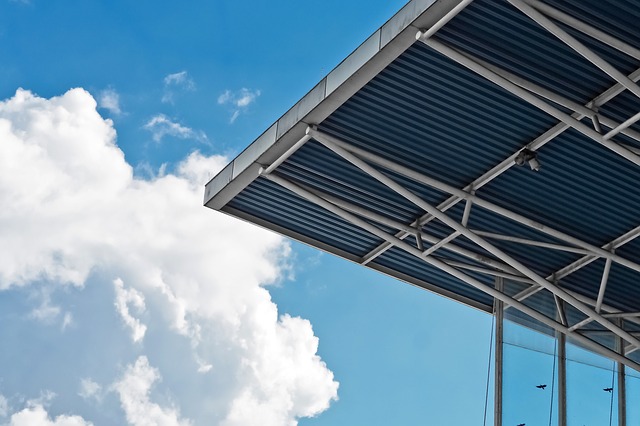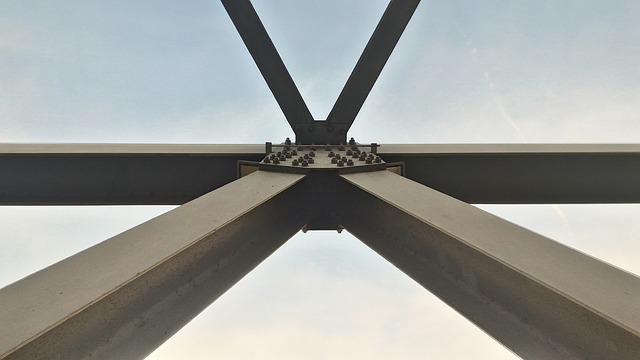Look at the sky and chose the right tools. While this may sound like an advice that came straight out from the mouth of a farmer in Alberta, this piece of advice is perfectly applicable for people seeking to improve metal fabrication in Langley. What follows here is that to enhance metal fabrication, it is important to choose the right materials for the work, to choose appropriate equipment to conduct that work, and to pay special attention to the surrounding atmospheric conditions if the work is done outside. Failing to pay heed to these small bits of advice may result in worse results, or even in putting yourself and others in danger if the work in question is done outside. Anyway, it is time to take a look at all these individual steps both in isolation and in relation to each other to see what this is all about.

Step 1 – Choosing the Right Material – Metal Fabrication in Langley
According to the American Iron and Steel Institute, there are four (broad) categories of steel available for building and constructing. But, this is a broad categorization, it includes only steel, and it is used here only to illustrate the amount of available material for fabrication. To get better metal fabrication in Langley, or anywhere else at this point, it is important to start with the right material. While this section opens up with steel and while steel is used in the most metal and construction jobs today, there is a reason it says “in most” and not in “all.” For example, copper and copper based alloys are another type of material extensively used in industry due to its ability to conduct electricity well and its corrosion resistance. While there is no need to tell experts in the industry to use copper-based alloys for ship hulls, should you decide to make a DIY small fountain or a tap in your back yard, you should probably opt for copper which is today the number one material for drinking water tubing. Since copper is also a soft metal, it is also frequently used for both external and internal decoration works. Copper and other of its alloys like bronze or brass will frequently form the make of ornamental locks, door knobs, tables or hinges.
Step 2 – Choosing the Right Equipment
After coming up with the initial idea for the project, it is time to take a look what tools and processes are at disposal for realization. The processes that fall under the category of metal fabrication are mostly cutting, bending, and assembling (by welding, with bolts or adhesives), out of which welding is usually the most appealing to DIY people. So, what equipment would a metal fabrication enthusiast in Langley opt for? The simplest answer is: “It depends on the material.” This is because most of the welding processes use filler materials (electrodes) that will correspond to the pieces of material that they are trying to join together. Metal inert gas welders and welders using shield metal arc method (SMAW), which are also one of the more popular methods among beginners, use always the electrodes that are made out of the same material that they are trying to weld together. For welders with much more experience in the industry, tungsten inert gas welding is the better option as the welder has more control over the process and this can yield a more quality weld. Using adhesives is another popular way of assembling materials and it might just be a bit more suitable for those who do not like spending time and money on heavy equipment and sweating over hot welds but are more concerned with the final result. Using adhesives to put together pieces of light gauge steel or any type of sheet metal, especially if those glued pieces will spend more time indoors than outdoors in the future, is a much better bet. It is also popular because, unlike with welding, you can pretty much glue together any two different types of metal.
Although the phrase “depends on the material” in the first part of this section might seem as a too broad expression (and in a way it is), the second part served to illustrate what this actually means. The takeaway message is to always think what the product, in the end, will be, and then examine the all the ways that can get you there and choose the best one.

Step 3 – Looking at the Sky
The work is moving outside. Is it snowing? Raining or about to rain? Windy? About to be all three or sunny and calm? All important questions for good metal fabrication in Langley since during the year all of these types of weather come to the city and all apart from the sunny, warm and calm can affect the work in negative ways. First of all, to address the safety concerns. The previously mentioned SMAW welding method is the one that needs direct electricity supply from the electric grid to power the process. The dangers are immediately apparent if the work is being done outside on a rainy or a particularly moist day. It is advisable to weld in these conditions only if absolutely necessary but always with a dry wooden pallet separating the welder and the machine from the damp ground, with overhead protection and in rubber boots or gloves. Other welding methods that use inert gasses for shielding, such as metal and tungsten inert gas methods, could also have decreased performance outside as the wind might blow the shielding gas away, exposing the weld to contamination and decreasing its quality. Using adhesives for assembly processes is not necessarily the solution either. Although there are types of glue that even require moisture in order to cure, the curing process of some other types, such as polyurethane glue, can be compromised in changing conditions.
To sum up, by paying attention to the atmospheric conditions, researching about the material type that is to be used, and using the right equipment to fabricate the metal, you could save a lot of effort and money on future repairs, get better results, and even avoid jeopardizing safety while working.
Sources:
http://www.steel.org/
http://geology.com/usgs/uses-of-copper/
https://www.theweathernetwork.com/ca/weather/british-columbia/langley
https://en.wikipedia.org/wiki/Langley,_British_Columbia_(city)






